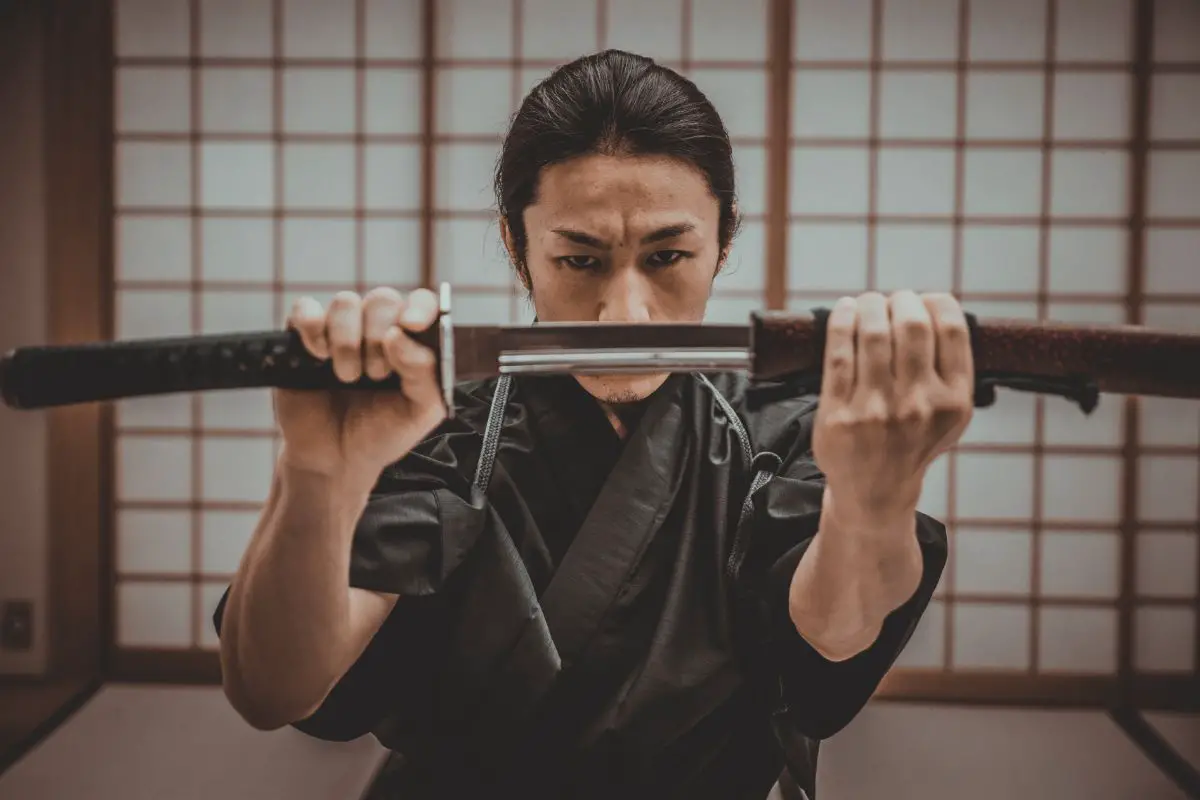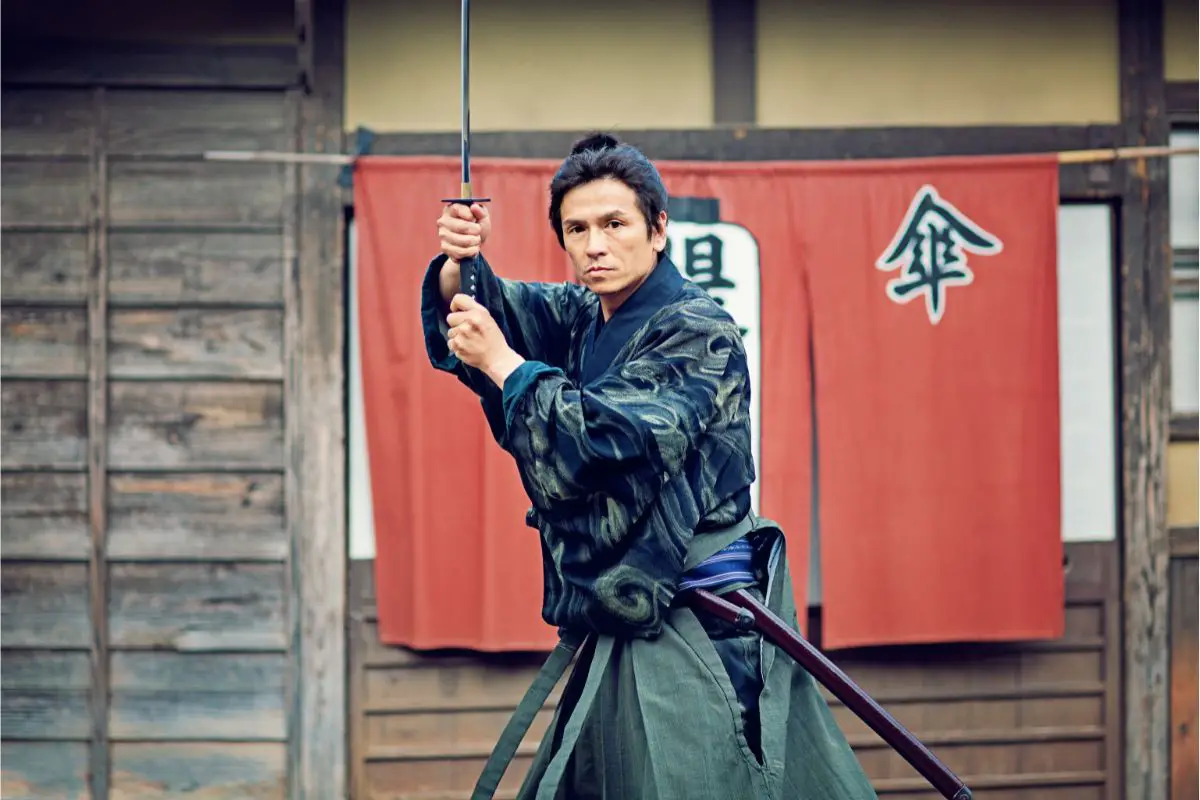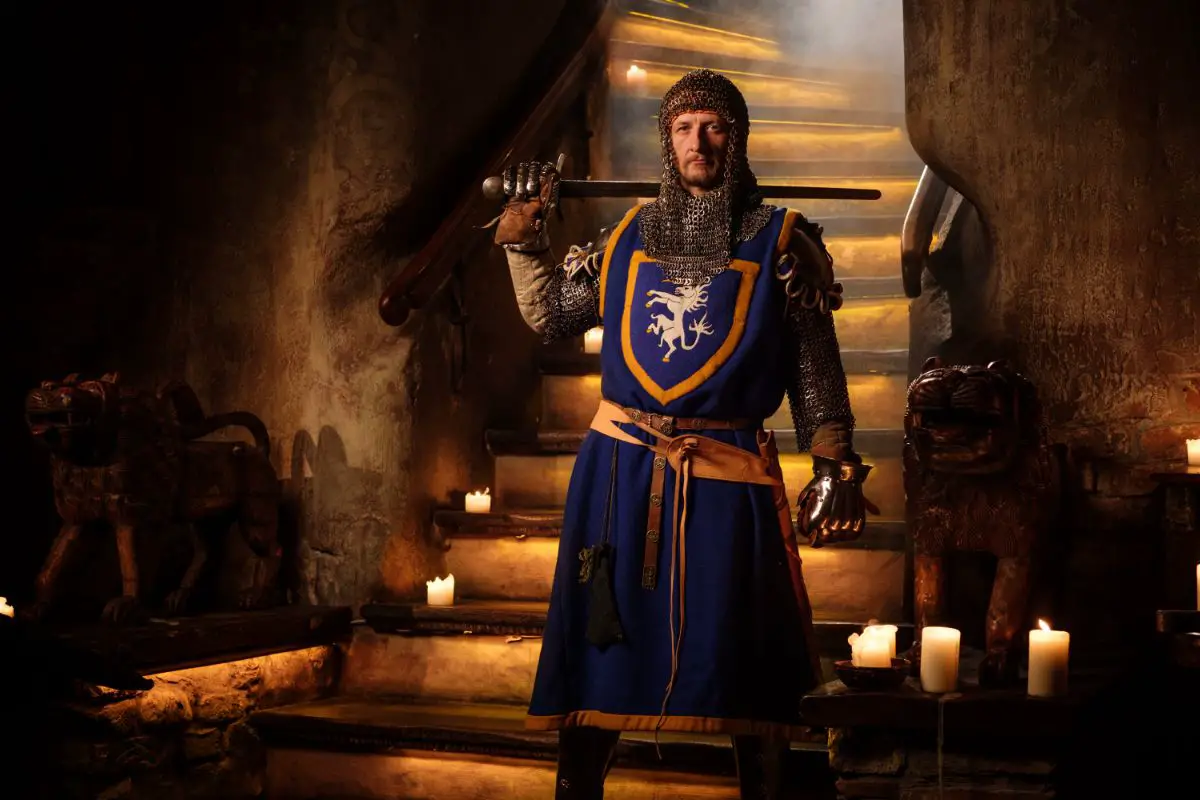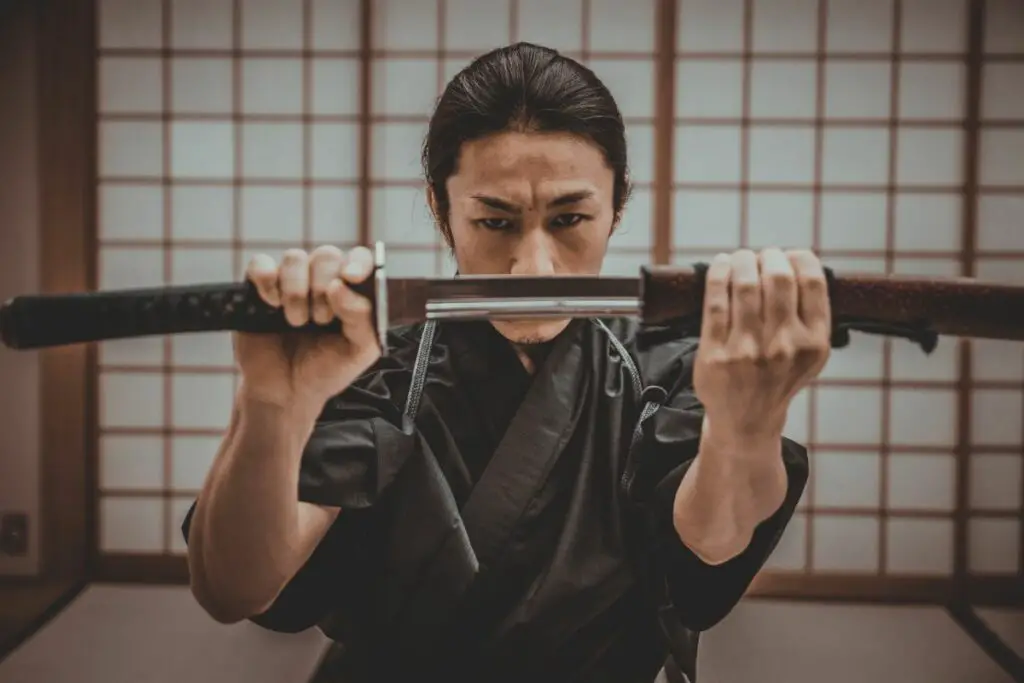There are many similarities to be found between Medieval Japan and Medieval Europe. However, there are also many differences. One that immediately jumps out is that the warriors of Medieval Europe were knights, and the warriors of Medieval Japan were samurai.

Knights and samurai may be considered the equivalent of one another, and they indeed share many similarities. However, there were also many differences between the two that allow us to classify them as two distinct groups.
However, aside from their names and where these groups originated, not many people know the similarities and differences between knights and samurai. We are here to rectify that!
In this article, we will be discussing the similarities and differences between knights and samurai to give you a better understanding of who they were, what they did, and more.
So, if you’re interested in learning more about these two fascinating groups, then read on for more!
Samurai And Knights: Who Are They?
First of all, let’s check out the basic information we need to know about samurais and knights.
Knights
A knight is an individual who has been awarded the honorary title of a knighthood by a monarch for fulfilling an obligation to the nation or the monarch itself. This is particularly true in the context of the military.
The very first medieval knights were warriors of the cavalry. In medieval times, knights were skilled fighters who were also extremely artful and known for their excellent display of manners. Knights were usually well-educated and they valued and constantly displayed respect and honor.
Knights had to follow a concept known as Chivalry. Chivalry was a moral, religious, and social code that saw knights trying to live up to the role of noble warriors who were fair on the battlefield, but also in their dealings with God and with women.
Knights typically fought in small groups. They wore chainmail armor, helmets, and their weapon of choice was a sword and shield, typically made from metal. These were very heavy and knights had to dedicate a lot of time to learning how to wield them.
From the age of 7, knights began their training. They would begin by serving at the king’s or lord’s castle and work their way up. Generally, knights had soldiery ranks and had to be involved in tournaments, such as jousts, and typically rode into battle on a horse.
Samurai
Samurai means “one who serves.” In the time of feudal Japan, Samurai were part of the military caste and had to train from a very young age.
The origins of the samurai can be traced back to the early Heian period, in the 8th and 9th centuries. They were created to subdue the Emishi people, who were native to the Tohoku region.
The samurai would go on to become symbolic of the ideal citizen and warrior for the next 700 years, becoming the ruling military class from 1603-1867, during the Edo Period.
Unlike knights, the samurai had no ranks. However, they had a similar concept to Chivalry known as “Bushido.”
Bushido means “the way of the warrior” and it has a religious meaning to the samurai. Bushido was a way of life for the samurai and took influence from Confucianism as well as Buddhism.
The most important tenets of Bushido are courage, calmness, loyalty, justice, politeness, self-sacrifice. honor, self-discipline, and fairness. The samurai were supposed to be stoic warriors who followed their code seriously, holding all of its values above their own lives.
The samurai also had a fighting spirit, much like knights, and they also rode into battle on swords. However, they used a series of different weapons while knights typically only used swords.
For example, when in direct combat samurai would use a katana and a shorter blade, but at a distance, either weapon of choice was the bow and arrow.
As for armor, the uniform worn by the samurai far surpassed that worn by the knights of Europe.
The samurai armor was specifically designed to allow them to move. However, despite being very flexible, it was also sturdy and would allow the samurai to hold their own on the battlefield.
The plates were typically made of leather or metal and the armor was bound together by either silk or leather.
The samurai held shoulder shields and their sleeves were lightly armored. However, to allow for increased movement their right hand would often be left without any sleeve.
Finally, the samurai would wear helmets called the kabuto, and the kabuto was made from riveted metal plates.
On top of being strong, renowned warriors, the samurai were well-educated. They were often skilled in mathematics and were highly literate. Samurai studied literature, made ink paintings, and wrote poetry.
Finally, unlike knights who were all men, some of the samurai warriors were actually women. The term “samurai” was masculine, but the Japanese bushi class did include many women who had the same training in both strategy and martial arts as the samurai.
These women were known as the Onna-Bugeisha, and they would fight in battles alongside the samurai.
The feudal era of Japan ended around 1868, and a few years later, the samurai class was dismantled.
The legacy of the samurai culture has produced many arts unique to Japan, including rock gardens, arranging flowers, and tea ceremonies.
How Are Knights And Samurai Similar?

Here are the ways in which knights and samurai are similar!
- Both samurai and knights were trained from a young age and were skilled warriors
- Knights and samurai both rode horses into battles
- Samurai and knights both followed codes of conduct that influenced their interactions with each other and others.
- Both knights and samurai fought for the dignity and pride of their respective nations and people.
How Are Knights And Samurai Different?
Here are the ways in which knights and samurai are different!
Differences Between Knights And Samurai: Origin
The origin of knights and samurai is very different.
Knights were considered an inferior aristocracy and granted as mounted fighters.
This only changed in the middle-late centuries when knights were considered to be skilled warriors and examples of good Christian soldiers – thanks to the code of Chivalry that they had to follow. People are still given knighthoods today, although it looks very different from what it once did.
Meanwhile, the samurai were once warriors in ancient Japan, and they eventually came to be the ruling military class of the nation. They received the highest position of social caste during the Edo era. The samurai were disbanded in 1868, once the feudal period of Japan ended.
Differences Between Knights And Samurai: Attire
During the middle ages, knights would wear thick, bulky attire. During battles, they wore armor that covered all of their bodies, including chainmail and helmets. This armor was usually made from iron or metal and was typically very heavy.
Meanwhile, in their homes, the samurai would wear two-piece outfits which were known as “kimishima.” They would wear kimishima over their kimonos.
Then, on the battlefield, samurai would weather armor made from various materials, such as metal, silk cords, leather, bamboo, and wood. Japanese armor was made to be flexible enough to move in but still bulky enough that they would be protected on the battlefield.
Differences Between Knights And Samurai: Weaponry
Knights and samurai had different weapons.
In the middle ages, knights would typically use swords in battle. However, during jousts and other events, they would use other weapons including lances. They would also use battleaxes, poleaxes, maces, and daggers.
Meanwhile, the weapon of the samurai depended on distance. For example, at long range samurai would use a bow and arrow to hit their targets. But at a close distance, they would fight with a katana or a smaller sword.
Differences Between Knights And Samurai: Military Ranking System
Knights employed various military ranks, with the grandmaster being the highest.
Meanwhile, the samurai did not have military ranks. However, they did have very basic ranks, including housemen and feudal lords.
Differences Between Knights And Samurai: Traditional Skills
Knights had to learn sword fighting and other weaponry, as well as great horsemanship.
The samurai also had to learn horsemanship and sword fighting. However, they also learned archery. On top of that, the samurai had to be well-educated, so they learned how to study literature and calligraphy, and had to write poetry as well as create ink paintings.
Differences Between Knights And Samurai: Code
While it is true that both knights and samurai had to follow a code of conduct, the codes themselves were different.
When it comes to knights, they had to follow a code known as Chivalry. Chivalry meant behaving in a way that was morally, religiously, and socially appropriate, particularly when it came to God and women.
However, the samurai followed a code known as Bushido. Bushido was a code that saw the samurai value self-sacrifice, self-discipline, loyalty, justice, and more, above their own lives.
Following bushido meant you had to be a stoic warrior who would fight for the dignity of your people and land.
Differences Between Knights And Samurai: Warriors
The knights were strictly men. However, the samurai had a female equivalent that was also trained in combat and strategy and would fight alongside them in battles. These women were not known as samurai, but the Onna-Bugeisha.
What Were The Strengths And Weaknesses Of The Knights?

Let’s check out the strengths and weaknesses of knights in more detail!
Knights: Strength
- Knights had powerful armor and were extremely skilled warriors, meaning they were challenging to defeat in battle.
- Thanks to their swords and shields, knights were able to attack and defend proficiently, making them hard to hit.
Knights: Weaknesses
- The metal armor restricted the movements of nights a fair deal, meaning it took a lot of physical strength to move around.
What Were The Strengths And Weaknesses Of The Samurai?
Let’s check out the strengths and weaknesses of samurai in more detail!
Samurai: Strengths
- Samurai could move around easily because their armor was very light, yet sturdy.
- Samurai were not just skilled with weapons, but they were also skilled in martial arts, which means that even without a weapon they were very difficult to defeat in battle.
Samurai: Weaknesses
- Samurai weaponry was typically not strong enough to penetrate the armor of knights because it was so thick. So, theoretically, if the knights and the samurai were to battle, the knights would be difficult to injure using weapons.
Who Are Some Famous Knights And Samurai In Popular Culture?
Let’s check out some of the most famous knights and Samurai in popular culture.
Examples Of Famous Knights
Here are some examples of the most famous knights in popular culture!
King Arthur
Of course, you cannot discuss knights without discussing arguably the most famous knight in history: King Arthur of Camelot (along with his band of knights, the Knights of the Round Table.)
Many people believe Arthur to have been a real figure who lived during the 5th or 6th century. However, many people believe him to be nothing more than a folk tale.
No matter whether you believe his story is fact or fiction, the legends of Arthur have been well documented in both the imaginative History Of The Kings Of Britain by Geoffrey Monmouth and Le Morte D’Arthur by Thomas Malory.
Perhaps the most famous story of King Arthur is the story of the sword in the stone, in which many people struggle to pull a sword, known as Excalibur, from a stone created by Merlin. However, the one to succeed is Arthur, and this means he is destined to be the once and future king of England.
The stories of King Arthur have gone on to inspire many adaptations, such as Merlin (2008-2012) and The Sword In The Stone (1963.)
Sir Lancelot
Of course, we cannot mention King Arthur without mentioning Sir Lancelot. Lancelot Du Lac was the very first Knight of the Round Table.
It is said that as a small child, Lancelot was abandoned at a lake by his family. However, he was found and raised by the Lady of the Lake, and became one of history’s greatest and most famous knights.
Lancelot is well known for his courage, courtesy, and gentle nature. He was a skilled swordsman and intelligent as he was charming.
Perhaps it was for these reasons that he captured the heart of Lady Guinevere, beloved of King Arthur, which resulted in one of the most famous love triangles in western history.
Richard The Lionheart
Richard I, also known as Richard the Lionheart, was a real-life king who began his reign in 1189. However, he spent very little time sitting on the actual throne.
In fact, most of Richard I’s time was spent fighting in other countries. Most famously, he fought in the Third Crusade, and it was here that he earned his reputation as a great military leader and fierce knight.
In total, Richard did not even spend one year of his entire reign in England. And, he spent the last years of his life doing what he loved the most – fighting! He even died on the battlefield, being wounded by a crossbow bolt during the English besiege of a castle in Chalus, France.
Examples Of Famous Samurai
Here are some examples of the most famous samurai in popular culture!
Oda Nobunaga
One of the most famous examples of a samurai is Oda Nobunaga. Nobunaga was a skilled warrior and a great leader. One of his most famous victories happened in 1560 when he killed Yoshimoto Imagawa after the latter attempted to take Kyoto and unify Japan.
Nobunaga was also an innovator and had the novel idea of introducing firearms to battle.
Sadly, he was murdered by his own general, Akechi Mitsuhide. Mitsuhide later committed suicide, which was considered to be a more honorable death.
Date Masamune
Date Masamune was well known for being a man of great violence and little mercy. For these reasons, he was one of the most feared samurai of his time.
Because of a smallpox infection as a child, he could only see out of his left eye. Therefore, he had to make a huge effort to gain recognition as a great warrior. So, he had many defeats when he started out, but slowly grew his reputation as a skilled warrior.
Masamune is famous for killing all members of his clan enemies when they kidnapped his father, but he also killed his father during this process.
Uesugi Kenshin
Ueusgi Kenshin was also called the Dragon of Echigo. He was a strong warrior and leader, famous for his ongoing rivalry with Takeda Shingen. These men fought for many years and faced off in 1-1 combat many times.
Kenshin is one of the only samurai warlords to resist Oda Nobunaga’s campaigns.
It is not known how exactly the Dragon of Echigo died, and there are many different stories surrounding his death.
Hattori Hanzo
Hattori Hanzo was the leader of the Iga clan. He is one of the most unique samurai on this list since he was both a samurai and a ninja warrior. This was not the only distinct difference between Hanzo and his fellow samurai.
One other major difference is that while samurai typically use katanas and bows and arrows, Hanzo’s weapon of choice was a spear.
Hanzo was a follower of Tokugawa Ieyasu, and he saved him from death many times during the course of his life. During his elder years, Hattori Hanzo was a Buddhist monk.
Hattori Hanzo remains one of Japan’s most famous and popular warriors, and he has gone on to inspire many other famous fictional characters.
Frequently Asked Questions
How Heavy Was The Average Knight’s Sword?
A typical long sword (a sword from Europe with a double-handled hilt) measured around 6-11 inches. The straight twin blade weighed in at around 2.2-3.3 lbs.
Why Were Katanas So Strong?
Katanas are well known for their capacity and power. They were made using Japanese steel known as Tamahagane, which is piled a dozen times and purified and refined until the blade was complete.
Did The Samurai And The Knights Ever Engage In Battle?
As far as we know, no. Knights and samurai did not ever engage in battle. This is because in the 1600s, during the European colonization of Asia, soldiers had already replaced knights, and gunpowder had replaced swords.
What Is The Correct Way To Wear A Katana?
Katanas were generally worn with the blade facing up, and this was for a few reasons.
The first is that this was the best way to ensure that the blade stayed sharp. Sometimes, the blades would become blunt due to friction when it was facing downwards in the scabbard.
The other was to reduce the number of leg and finger injuries from the sword when the collar becomes loose thanks to it constantly tearing and rubbing.
Final Thoughts
There are many similarities and differences between knights and samurai. Knights hail from medieval Europe and were known to be excellent swordsmen who followed a code of conduct known as Chivalry.
They wore heavy armor, fought primarily with swords and shields, and rode horses into battle. People are still knighted today.
Samurai hail from ancient Japan and were also known to be excellent warriors but were proficient with many weapons, including the katana, as well as martial arts. Samurai followed a code of conduct known as Bushido.
They wore light, flexible armor that was still sturdy enough to make them hardened opponents. The samurai came to an end in 1868, along with the end of Feudal Japan.









